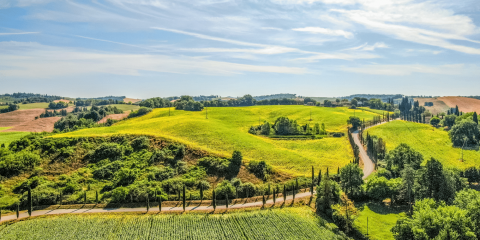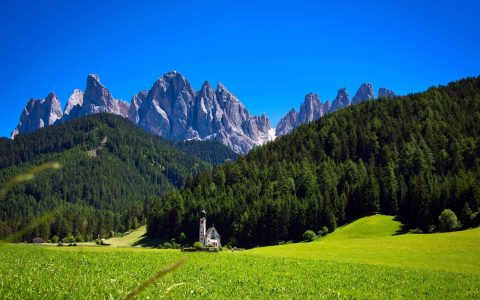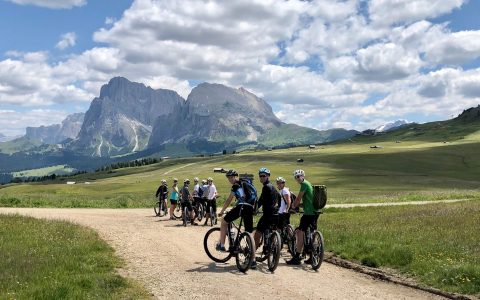In Deep: The Island of Capri
 Glamorous, alluring, sophisticated, charmed and lucky…it’s hard to choose the right adjective to describe how I feel when I’m on the Amalfi Coast.
Glamorous, alluring, sophisticated, charmed and lucky…it’s hard to choose the right adjective to describe how I feel when I’m on the Amalfi Coast.
World-renowned for its brightly-coloured villages clinging to hillsides, and bustling towns and islands—think Capri, Positano, Ravello—where jet-setters and tourists alike bump elbows, when you make your way to this slice of Italian paradise, you’ll find it sophisticated, elegant, yet secluded and private all at once.
You might think it’s impossible to find a spot to yourself in such a touristy part of Italy, but it happens, especially if you’re arriving by private yacht or meandering amongst lemon groves perched high in the mountains. One of the best ways to appreciate the Amalfi Coast is by sea, taking in the colourful houses and golden-domed churches descending to the water, dotted with tiny inlets and coves.

A Sparkling Jewel of the Mediterranean
 Often described as the most appealing island in the Mediterranean, Capri boasts a magnificent blend of natural beauty and charm. The island’s rich history is ripe with captivating tales of scandal and colourful characters.
Often described as the most appealing island in the Mediterranean, Capri boasts a magnificent blend of natural beauty and charm. The island’s rich history is ripe with captivating tales of scandal and colourful characters.
Located 32 kilometres (20 miles) south of Naples and just six kilometres (four miles) from the Sorrentine Peninsula, the island of Capri is approximately 10 kilometres (six miles) long, covering a total area of about 15 square kilometres (six square miles). The island is divided between the municipalities of Capri Town and Anacapri.
Evidence of human habitation on the island dates back to the Lower Palaeolithic Era, approximately 400,000 years ago. An excavation of the area near the Hotel Quisisana revealed the remains of continental fauna, including Elephas antiquus (the straight-tusked elephant)—proof that Capri was once joined to the Sorrento peninsula.

The geography of the island is often compared to the shape of a camel’s back: marked by two high mountains (one to the east and one to the west), it flanks a saddle area that slopes gently to the sea on either side.
Known as the “Emerald Island,” Capri boasts incredible aqua-green waters that sparkle like a jewel in the bright sun. Its overall vibrant green appearance is bolstered by the more than 800 species of plants that flourish on the island.
Experience Amalfi Coast With B&R
Scheduled Group Walking Trip
Glamorous doesn’t even begin to describe it. From chic Capri and the cliffs of Positano to Amalfi Town and Ravello, on our Amalfi Coast Walking trip, soak up the luxe elegance of this incredible coast (and its equally stylish locals).
DETAILED ITINERARYPrivate Group Walking Trip
From sunset sipping on limoncello to the exhilarating, elegant coastline, our Capri to Positano Walking trip, immerse yourself in the colourful, stylish towns of chic Capri to the dramatic cliffs of Positano, all with your own crew.
DETAILED ITINERARYCapri Town
The island’s main town is a maze of shops and restaurants, many of which exhibit typical Mediterranean architecture. Its narrow streets and stairways are crossed by buttresses that support the charming whitewashed buildings. Capri Town is home to about 7,300 people.
 Piazza Umberto I
Piazza Umberto I
If Capri Town is the heart of the island, then its main square, La Piazzetta, is its pulse. Outdoor cafés surround this social epicentre where celebrities rub elbows with eccentrics and other interesting characters. No visit to Capri is complete without having had a coffee or aperitivo at one of the piazza’s bars.
Church of San Stefano
Built by a master builder from Amalfi in 1683, this 17th c. baroque-style church is situated above Piazza Umberto I on the site of a former cathedral. Only the clock tower, which was the campanile of the earlier cathedral, remains.
Anacapri Town
Now considered the island’s second urban centre, Anacapri began its development in the 16th century as an agricultural, forestry and pastoral centre. It has always been less accessible than Capri Town due to its altitude (275 metres/902 feet above sea level), and its distance from both island ports. Today, Anacapri is home to about 6,000 people.

Church of San Michele
This baroque church in Anacapri Town was built between 1698 and 1719. The church is famous for its extraordinary floor of majolica tiles depicting the expulsion of Adam and Eve.
Marina Piccola
On the island’s south side is Marina Piccola (“little harbour”), at the base of Monte Solaro. In contrast to the chaos of the main port of Marina Grande, this docking area receives little traffic, so visitors can relax on the small pebble beaches. Look for the famous Siren’s Rock dedicated to the spot where mythical enchantresses seduced local fishermen, according to Roman legend.
Torre Damecuta
One of the many villas of the Roman Emperor Tiberius, the Torre Damecuta offers one of the island’s most incredible views. Still remaining beneath the medieval tower are the ruins of a smaller Roman residence and an alcove tucked into a cavern, which explains the roots of the villa’s name: domus means residence and cuta means cavern. The villa was covered in ash and abandoned following the Mount Vesuvius eruption in 79 AD.
Villa Jovis and Palazzo di Tiberio
 Villa Jovis was the largest and perhaps most important of the 12 residences belonging to emperor Tiberius on Capri; from here he governed the Roman Empire during his final years (27-37 AD). Dominating the rocky spur of Monte Tiberio, the remaining walls and foundations give a good indication of the Imperial Palace’s former grandeur.
Villa Jovis was the largest and perhaps most important of the 12 residences belonging to emperor Tiberius on Capri; from here he governed the Roman Empire during his final years (27-37 AD). Dominating the rocky spur of Monte Tiberio, the remaining walls and foundations give a good indication of the Imperial Palace’s former grandeur.
To the villa’s eastern side, on the summit of Monte Tiberio, is a tiny church, Santa Maria del Soccorso, from which there are spectacular views: Golfo di Napoli, the islands of Ischia and Procida, Mount Vesuvius, the Li Galli rocks (just off Positano) and part of the Golfo di Salemo. Nearby is the faro (lighthouse), once part of a messaging system of semaphores (signals) to Rome. Also noteworthy is the sheer cliff known as Salto di Tiberio; Tiberius is said to have hurled enemies and lovers he had grown tired off of this very cliff.
The Faraglioni
Just opposite Punta Tragara (a landing point used during Roman times) are three enormous rocks. Erosion has separated these limestone pinnacles from the island, thereby creating accessible caves, grottoes and fascinating natural archways. Two rare animals live on these isolated rocks: a blue-stomached lizard (Lacerta caerulea faraglionensis) and a “guffawing” seagull.

Arco Naturale
This dramatic, massive limestone archway evolved from centuries of marine erosion and dates to the Paleolithic age. It was originally a large grotto that penetrated the mountain.

Via dei Fortini
 “The Pathway of the Forts” is a spectacular trail cut into the cliffs of Capri. A staircase magically appears as if carved into the rocky masses scattered off as far as the eyes can see.
“The Pathway of the Forts” is a spectacular trail cut into the cliffs of Capri. A staircase magically appears as if carved into the rocky masses scattered off as far as the eyes can see.
With crystal clear turquoise waters to one side and rocky promontories on the other, the now-abandoned fortresses along the path were originally built for protection from Saracen raids and were later rebuilt by the British during the Napoleonic Wars of the early 1800s. This ‘undiscovered’ side of Capri affords you breathtaking views of the sea and the occasional odd goat along the trail for company.
MORE FROM Italy + Amalfi Coast

Take on a Challenge on the White Roads of Tuscany
Tuscany
Reading for the Road: Books About Florence
Tuscany
New Trip Spotlight: Venice to Verona Biking
Veneto
Cuisine 102: Tuscan Delicacies
Tuscany
New Trip Spotlight: Piemonte to Portofino Walking
Cinque Terre
How to Best Experience the Natural Wonders of Umbria
Umbria
Notes from the Road: A Research Trip in Sicily
Sicily
Umbria’s 3 Essential Cities
Umbria
Sustainable Cuisine in Northern Italy: In Conversation with Michelin-starred Chef Norbert Niederkofler
Dolomites
The Origin of the Negroni: Florence’s Favourite Cocktail
Tuscany
The 10 Best Restaurants in Florence
Tuscany
Giro-E: Racing the Giro d’Italia Route on E-bikes
Italy
The Best Villas in Italy: Amalfi, Tuscany and Umbria
Amalfi Coast
A Taste of Piemonte with Silvia Altare
Piemonte
Finding Prosperity in Food & Community in Rural Italy
Puglia
5 Unmissable Tuscan Hilltop Towns
Tuscany
The Most Incredible Hikes in Italy’s Dolomite Mountains
Dolomites
The Best Hotels in Rome for Every Taste
Rome
A Day in Florence: Rediscovering the City with Family Post-Lockdown
Tuscany


